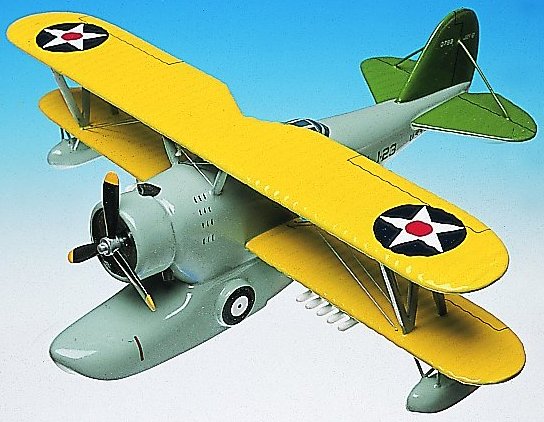|
|
|

|
Grumman
J2F Duck |
 |
|
In 1937 the first of 544 Grumman J2F "Ducks" was
delivered to the Navy. The J2Fs were utilized in the fleet for
anti-submarine operations as well as utility aircraft aboard
carriers in a ship-to-shore link. Several were ordered for the
Coast Guard as well as a Marine Scouting Squadron to be equipped
with machine guns and bomb racks. During World War II, the
"Duck" served in a number of operational roles in the
Atlantic and Pacific Theaters. A Coast Guard J2F aircraft played
an instrumental part in the capture of a secret German radio
station in Greenland while J2Fs fitted with depth charges were
credited with damaging at least two German submarines in the
Atlantic. In the Pacific, a J2F on a photo reconnaissance
mission was credited with damaging two Japanese "Zero"
fighters and rescued many downed pilots at sea.
The Grumman JF/J2F Duck is a small utility amphibian with a
center float, wing floats and retractable landing gear. It
was derived from the XJF-1, a Grumman amphibian that flew for
the first time in May 1933. Later, Grumman built a variety
of JF- and J2F- series aircraft. They were used primarily
by the Navy, Marine Corps, and Coast Guard, before and during
World War II for photography, target-towing, scouting and rescue
work. A total of over 600 aircraft of all versions were
produced.
In 1948, the USAF
acquired eight surplus Navy J2F-6s for air-sea rescue work. Five
were designated OA-12s and sent to Alaska for duty with the 10th
Air Rescue Squadron (the other three disappeared from the
records and apparently went to an allied country under the
Mutual Defense Assistance Program).
|
|

|
Grumman J2F-2
Duck
Deluxe Series. 1/32nd scale. 14.65" wingspan x
12.85" long.
No. ADN4D-DX. Only $169.95 |
|
